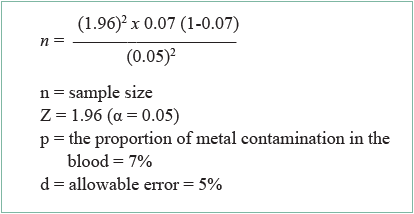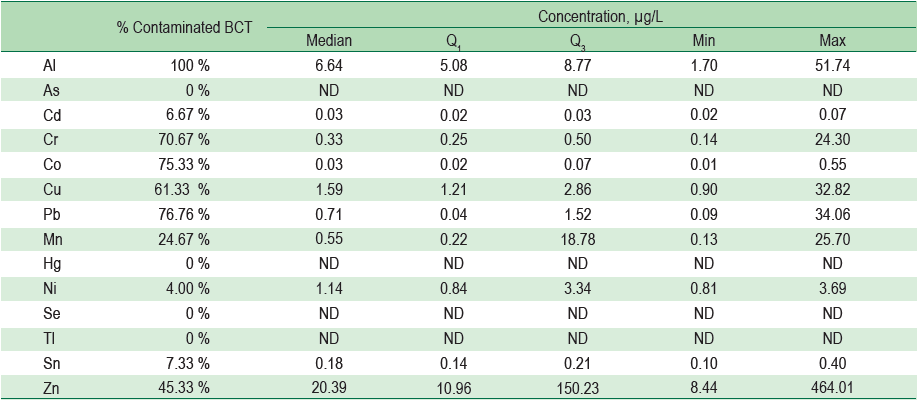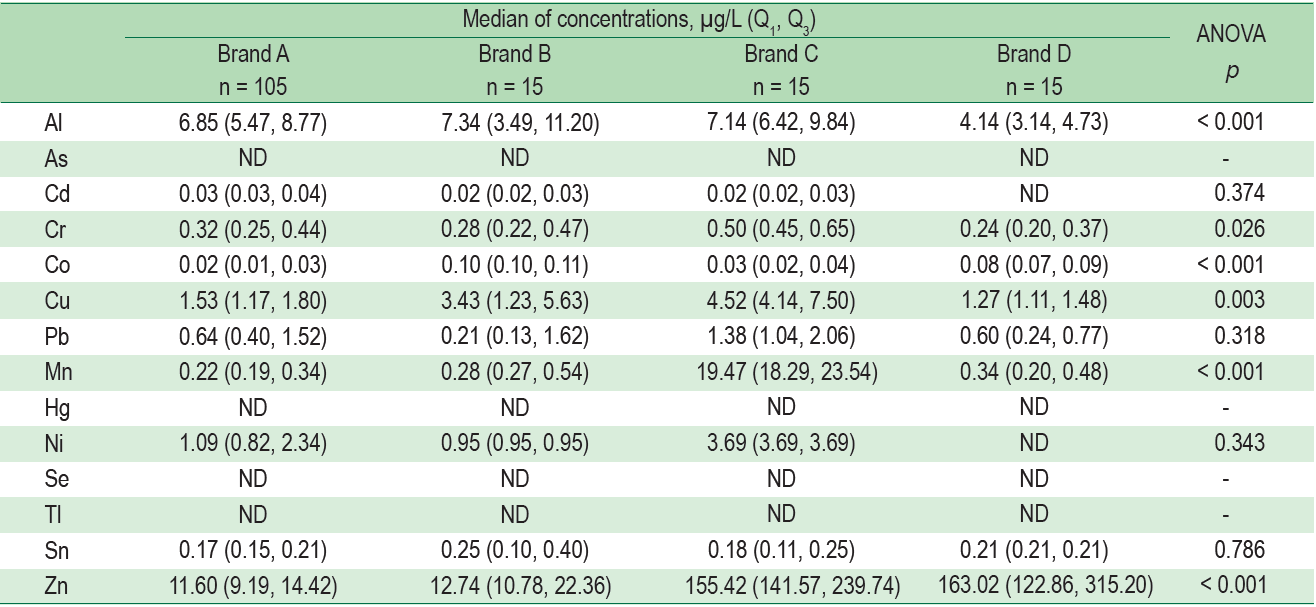Thailand is classified as a developing country. One of the goals of developing countries is work safety. Industry is one of the major businesses that helps drive the economy of Thailand. Data from the Office for National Statistics showed that since the year 2009, the proportion of the working-age population of industry and service sectors has been higher than that of agricultural sector, and it is increasing every year. In addition, since the year 2005, the birth rate in Thailand has declined and started the transition to an aging society. Therefore, health care and public safety are highlighted as very important issues in order to maintain a good quality of life of people from working age to retirement.1 For more than 30 years, the government has realized the importance of the working age population, so legislation and regulations have been issued as well as the establishment of various organizations to promote health and safety in the workplace. In 2012, the Ministry of Industry announced the guidelines in physical examination for chemical and physical occupational health risk factors in workplace 2 to serve as the guidelines for health screening and monitoring for workers in the workplaces that are vulnerable to threats and to assess the effectiveness of existing protection measures.
One of the chemicals commonly found in industry is metal. Workers may be exposed to it in the form of dust or fumes. Engineering control is the best prevention. The amount of metal in the source must be reduced. However, in some workplaces, there are limitations, such as manufacturing technology, budget and management. Therefore, the source cannot be controlled. The prevention which is simple and cheap is the use of personal protective equipment (PPE). However, it may be less effective, so some workers may be exposed to metals. Therefore, biomarkers of exposure should be checked. According to the announcement of the Ministry of Industry on the medical examination of the health risks from exposure to 20 types of metals, only 5 types, including cadmium (Cd), cobalt (Co), chromium (Cr), lead (Pb) and mercury (Hg) have the reference values from blood or urine tests from working. Although the reference values of blood and urine tests are not defined with another 15 types of metals, physical examination for surveillance of the health impacts of at least 1 time per year is needed. The accuracy of the analysis of metals depends on many factors. The laboratory error frequently found is pre-analytic errors such as contamination from skin, ambient air, clothes and blood collection tubes.3,4 A royal blue top BCT is used for blood collection, but it is not available in Thailand. So, a lavender top BCT coated with ethylenediaminetetraacetic acid (EDTA), which may be contaminated with zinc (Zn) and other metals,5-7 is used instead.
Workplaces recognize physical examination for occupational health risk factors, but the accuracy of the analysis depends on several factors, including pre-analytic errors, such as using the wrong type of blood collection tube,4 and health personnel causing error examination results, especially the determination of metals in blood. This may be caused by various factors mentioned above, e.g. a lavender top BCT coated with EDTA, which may lead to the misinterpretation and the examination must be repeated to confirm the results.8,9 As a result, venipuncture has to be administered with workers again which wastes time increase cost. Therefore, this study aimed to explore the metal contamination in blood collection tubes. The findings may be used to guide management when high metal concentration is found.
Study population and sample size
Descriptive statistics were employed to study the metal contamination in lavender top BCTs coated with ethylenediaminetetraacetic acid (EDTA) and 2-3 mL of deionized water was added to all lavender top BCTs. These tubes from the Department of Occupational Health of 9 hospitals in Chonburi Province, including 4 public hospitals, 3 private hospitals, and other agencies, had been stored properly and were not expired. Because there were no data on the number of blood collection tubes used for metal determination in each hospital and according to other studies on metal contamination in blood,10 the sample size was calculated using the formula below.

Although the determination of metals or trace elements can accept the allowable error at 10-20%, in this study the allowable error was set at 5% order to obtain more samples. After substituting in the formula, the total sample size was 101.
Sample collection and analysis
This study was approved by the Ethics Committee of Institutional Board of Bangkok Hospital with the approval No. BMC-IRB 2015-10-049. The request for permission to collect lavender top BCTs was submitted to the persons who were responsible for this matter in the hospitals. If the hospitals used lavender top BCT with several brands, 15 tubes from each brand were collected. All tubes must be kept properly and not be expired. Then the blood collection tubes acquired from the hospitals were divided into three groups: five tubes per group. Each group had simulated the collection of blood samples from patients using a 20 mL disposable syringe made of polypropylene and a stainless needle to draw 20 mL of deionized water obtained from the water purifier brand Merck Millipore, model Milli-Q® Direct which passed the examination of metal contamination and injected it to 2-3 mL blood collection tubes. The blood collection tubes were inverted 10 times11 to mix liquid in the tube with an anticoagulant. All samples were stored at 2-8 °C for at least one day to simulate the transit period, but not longer than 14 days. Then the samples were analyzed for metal concentrations using inductively coupled plasma mass spectrometry (Agilent Technologies, model 7700x), which is the most reliable method in terms of sensitivity, accuracy and precision12 at the laboratory of Bio Molecular Laboratories (Thailand) Co., Ltd. (N Health) certified by ISO 15189: 2012 and the accuracy is over 90% from Certified Reference Materials (CRMs) for ICP-MS. However, the laboratory provides only 14 metals and the details of the method detection limits are shown in Table 1.
Data analysis
The metal concentrations obtained from ICP-MS were analyzed by STATA® version 13. Descriptive statistics, including percentage, median, quartile, minimum and maximum values were employed. Analytical statistics using analysis of variance (ANOVA) were also used to test the differences of the metal concentrations in each group and brand. When the differences between the groups were found, one-way ANOVA with Bonferroni correction was used to find out the groups that had different averages.
Table 1: Laboratory’s metal assay availability and detection limits of ICP-MS.

According to the survey of the Department of Occupational Health at 9 hospitals in Chonburi Province, it was found that all hospitals used the blood collection tubes coated with K3 EDTA, and only one hospital used both blood collection tubes coated with both K3 EDTA and K2 EDTA. Therefore, 15 tubes of each type were collected, so the total was 150 tubes. There were 4 brands observed in this study. Deionized water was analyzed by ICP-MS for 14 target metals before injecting into blood collection tubes. Only one metal contamination was found: aluminum (median 2.85 μg/L, Q1 1.83, Q3 3.72). After injecting deionized water and leaving it for at least one day, the water in blood collection tube was analyzed by ICP-MS. The contaminations of aluminum, cadmium, chromium, cobalt, copper, manganese, nickel, lead, tin, and zinc were found as shown in Table 2. The first top five percent of contaminated BCTs found in blood collection tubes included aluminum (100%), lead (76.76%), cobalt (75.33%), chromium (70.67%) and copper (61.33%). The first top five median contaminations included zinc (20.39 μg/L), aluminum (6.64 μg/L), copper (1.59 μg/L), nickel (1.14 μg/L) and lead (0.71μg/L). However, the contaminations of arsenic, mercury, selenium and thallium were not found.
After comparing metal concentrations of three groups, the medians of aluminum, cadmium and zinc differed with statistical significance as shown in Table 3. The medians of aluminum were different between group 1 and group 2 (p = 0.032). The median of cadmium was different between group 1 and group 2 (p = 0.037) and the medians of the zinc were different between group 1 and group 2 (p = 0.012), and between group 1 and group 3 (p = 0.005).
After comparing metal concentrations of four brands, it was found that the medians of aluminum, chromium, cobalt, copper, manganese and zinc were statistically significantly difference as shown in Table 4. The medians of aluminum were different between brands A and B (p = 0.013) and brands B and D (p < 0.001). The medians of chromium were different between brands A and B (p = 0.018). The medians of cobalt were different between brands A and B (p < 0.001), brands A and D (p = 0.010) and brands B and D (p = 0.002).The medians of copper were different between brands A and C (p = 0.002). The medians of manganese were different between brands A and C (p < 0.001), brands B and C (p < 0.001) and brands C and D (p < 0.001). The median of zinc (Zn) was different between brands A and C (p < 0.001), brands A and D (p < 0.001), brands B and C (p < 0.001) and brands B and D (p < 0.001).
Table 2: Metal concentrations in deionized water in lavender-top tubes (EDTA), n =150

ND = Not detected due to limit of detection
Table 3: Metal contaminations in each group of testing

ND = Not detected due to limit of detection
Table 4: Metal concentrations in each brand of testing

ND = Not detected due to limit of detection
The results from this study showed that the lavender top BCTs were contaminated with aluminum, cadmium, chromium, cobalt, copper, manganese, nickel, lead, tin and zinc. The contamination was different in each brand. The common or high level of contamination found included zinc, aluminum, copper and lead. These findings were consistent with other previous studies. The metal contamination was commonly found in ambient air in laboratories, clothes, gloves, blood collection tubes, stoppers, anticoagulants, syringes or even cosmetics.3-6, 9,10,13-15 Cadmium, chromium, cobalt, manganese and nickel were to be found less contaminated. They may be contaminated from needles.3,9 This study was trying to control sources of the contamination by testing at only one laboratory which has the same ambient air, using powder-free gloves in order to avoid contaminated with zinc from talc,3 using disposable syringes made of polypropylene and stainless needles were used throughout the study to minimize metal contamination.3,12 Therefore, factors affecting the contamination in this study were blood collection tubes, stoppers and anticoagulants. Many studies demonstrated that decontaminating metals from BCTs by washing with HCl or HNO3 solutions16,17 causes metals to be more soluble in acid.
According to the analysis of deionized water which was injected into the blood collection tube, it was contaminated with aluminum. When the water from the blood collection tubes was analyzed, aluminum was found in every tube with the average increase of 3.79 μg/L. When the metal concentrations of three groups were compared, the medians of aluminum, cadmium and zinc differed with statistical significance and the ranges were 3.63 μg/L, 0.03 μg/L and 0.25 μg/L, respectively. However, the unit of measurement was very small, so when compared with the reference values in human blood; aluminum was less than 10 μg/L or less than 60 μg/L in patients on dialysis, cadmium was less than 5 μg/L and zinc was in the ranges of 6,000 - 10,000 μg/L.18 This may not affect much the interpretation of the results. When the metal concentrations of four brands were compared, it was found that the medians of aluminum, chromium, cobalt, copper, manganese and zinc differed with statistical significance. Also, when it was compared with the reference values in human blood, it could not affect the interpretation much, except aluminum and manganese. Aluminum was found the highest level in BCT brand B, 51.74 μg/L. Manganese was found the highest level in BCTs brand C, 25.70 μg/L (reference values of manganese in the blood were 4 - 15 μg/L). In addition, another metal which was seldom found, but it affected the interpretation of the results, was nickel and was found the highest level in BCTs brand C and A, 3.69 and 3.34 μg/L (reference value of nickel in blood was less than 5 μg/L).
The reduction of metal contamination can be achieved by using diluted HCl or HNO3 to rinse containers before using it to collect specimens.14,15,17 However, this is hard to implement for blood collection tubes. Recently, royal blue top BCTs or metal-free tubes are recommended for the blood collection for metal or trace element analysis 12 because they have a lower contamination compared to lavender top BCTs. This study showed that there was metal contamination in blood collection tubes. The limitation of this study is using of deionized water instead of blood or serum which may have different metal dissolution.
This study showed the contamination of aluminum, cadmium, chromium, cobalt, copper, manganese, nickel, lead, tin and zinc, but could not observe arsenic, mercury, selenium and thallium in BCTs. The contamination may be caused by the blood collection tubes, stoppers or anticoagulants. The remarkable contamination are aluminum and manganese. It is difficult to estimate because of differences in solubility. Many techniques were suggested, but they are not practical. The royal blue top BCTs were recommended.
The authors declare that there is no conflict of interest and no any support from neither BCT manufacturers nor distributors.
The researchers would like to express sincere gratitude to Dr. Wiwat Ekburanawat who gave recommendations as well as comments which were beneficial to this research. We would also like to thank the officers of Samitivej Sriracha Hospital who supported this study and 9 hospitals in Chonburi Province for good cooperation given to the researchers.